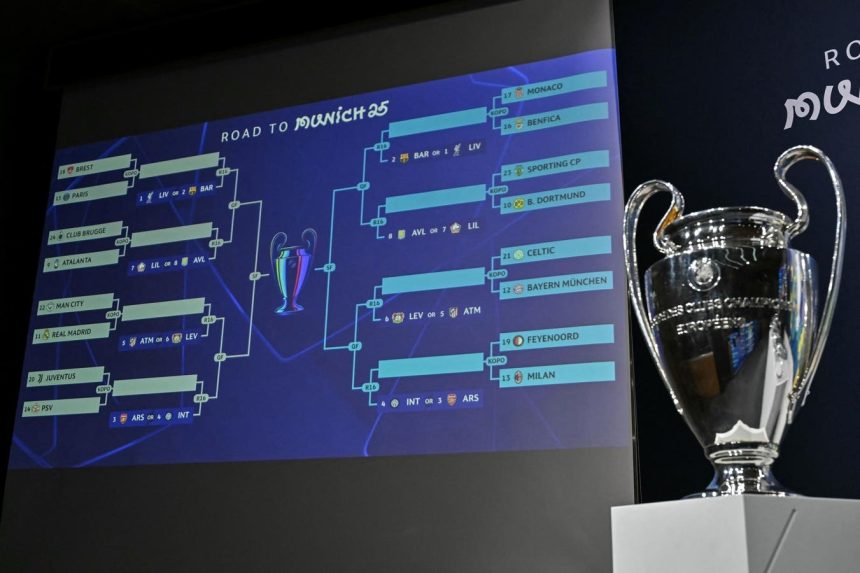The UEFA Champions League, a pinnacle of European club football, has undergone a significant format change for the 2024/25 season, transitioning from a traditional group stage to a single league table encompassing 36 teams. This shift, while promising increased revenue and a longer tournament engagement, has sparked debate about its impact on the competition’s dynamics, excitement, and fairness. The new format introduces a “Swiss-style” league phase, where each team plays eight matches against opponents of varying strengths determined by a seeding system. This replaces the previous format where 32 teams were divided into eight groups of four, with the top two from each group advancing. This revised structure aims to provide more matches and, consequently, more revenue, but it also raises questions about the balance between commercial interests and the sporting integrity of the competition.
The initial phase now resembles a marathon league, with each club navigating eight fixtures against diverse opponents. Following these initial matches, the top eight teams automatically qualify for the round of 16, a format reminiscent of the previous system. However, the new format introduces a playoff round for teams ranked 9th to 24th, offering a second chance to reach the knockout stages. Teams finishing in the bottom 12 are eliminated. This playoff system introduces a new layer of drama, offering a lifeline to teams that might have faltered in the initial league phase, while simultaneously adding a high-stakes hurdle for those aiming for a direct route to the round of 16. The format change, while increasing the number of matches and potentially extending the involvement of more teams, creates a more complex and protracted pathway to the final.
One key difference under the new format is the advantage conferred upon higher-ranked teams within the playoff bracket. Finishing higher in the league phase (9th versus 24th, for example) ensures a more favorable draw against a lower-ranked opponent in the playoffs. This benefit extends to the top-ranked teams as well, as finishing first or second in the league phase guarantees avoiding other top contenders until the final and bypasses potential clashes with the highest-ranked playoff winners in the round of 16. This system incentivizes stronger performance throughout the league phase, as a higher finish directly translates to an easier path in the subsequent playoffs. However, it also raises concerns about potential inequities, as lower-ranked teams face tougher challenges from the outset of the knockout phase.
The introduction of playoffs inserts a dramatic twist into the competition, creating potential upsets and prolonging the involvement of a broader range of teams. Teams finishing as low as 24th still have a chance to reach the last 16 through two strong playoff performances, though this route arguably presents equivalent challenges to direct qualification under the previous format. For favored teams, the longer league format provides a safety net, ensuring continued participation even with a less-than-stellar performance. However, finishing just outside the top eight necessitates navigating the playoff stage, adding an extra layer of complexity to their campaign. Ultimately, the revised structure maintains a balance of opportunities for both underdogs and favorites, with the real jeopardy commencing in the playoffs.
A central criticism of the new format centers on the diluted excitement in the early stages of the competition. The extended league format, while offering more matches, diminishes the urgency and significance of early fixtures. The lack of immediate consequences for a loss reduces the tension and excitement typically associated with high-stakes group stage matches. The simultaneous scheduling of 18 matches in the final round of the league phase, though offering a dramatic climax, also presents a challenge for viewers attempting to follow the unfolding drama. The reduced emphasis on the draw, a previously anticipated event that generated excitement and speculation about potential matchups, further dampens the overall pre-knockout stage anticipation.
The motivation behind the format change is transparent: increasing revenue through more matches. The expanded schedule offers more opportunities for broadcasters and sponsors, while clubs benefit from enhanced performance bonuses. This emphasis on commercial gains raises concerns about the prioritization of revenue over the sporting essence of the competition. While the new format allows for a wider range of narratives and potential underdog stories to develop, the prolonged format may also lead to a more predictable outcome, with the traditional powerhouses likely still dominating the latter stages. The increased number of matches and the added complexity of the playoff system, while potentially benefiting UEFA financially, risk diluting the intensity and excitement that characterized the previous Champions League format. The challenge now lies in finding a balance between generating revenue and preserving the thrilling, unpredictable nature of the competition that captivated fans for decades.



